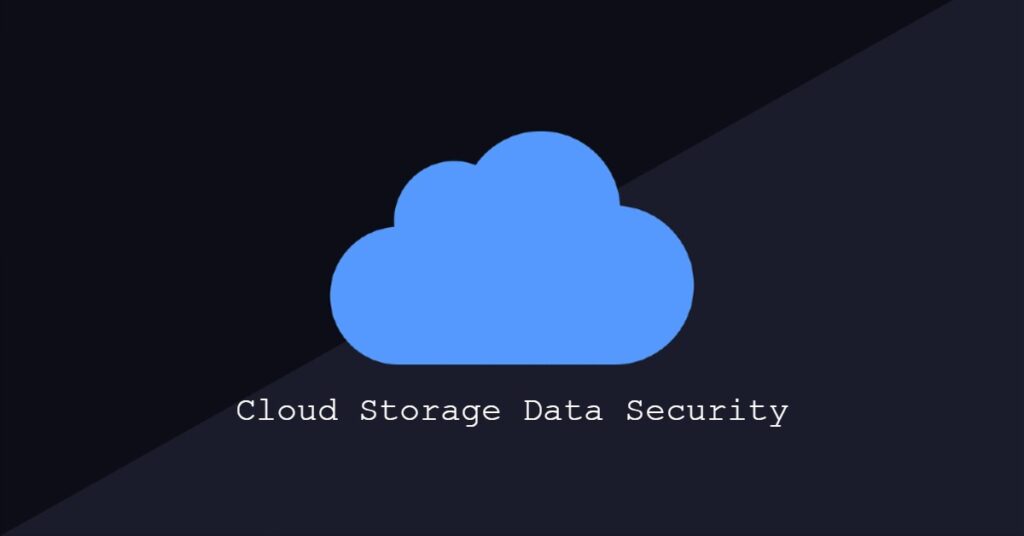Before cloud storage, both individuals and businesses were forced to buy more hard drives and SD cards to store their data. This could get expensive. But during the late 2000s, tech companies began offering a new solution: cloud storage.

Cloud storage is the storing of data on an off-site server. In other words, a company—let’s say Google—will store your data on a server farm that they have dedicated to cloud storage.
Businesses use cloud storage to store employee data, organizational apps, and vice versa. Individuals use cloud storage to avoid flooding their hard drives/SSDs with non-important data. Even major consumer-grade electronics use cloud storage—electronics like consoles, phones, and laptops.
However, cloud storage services are constantly threatened by cybercriminals, malware, and user errors.
Security Threats Facing Cloud Storage Services
1. Ransomware
Ransomware has caused quite a stir in the past few years. The damage it is capable of causing is alarming. With billions of dollars in damages done by one case of ransomware, cybersecurity experts are constantly searching for ways to protect users from it.
Unfortunately, cloud storage is susceptible to ransomware. Suppose a user works on a local file that is constantly saved to the cloud (like a Microsoft Word doc being uploaded to OneDrive while being worked on). In that case, ransomware can forcefully encrypt the file and allow the now-encrypted file to upload itself to cloud storage, meaning users will lose access to both the local file and the cloud storage version.
Of course, other types of malware are dangerous, too; spyware, adware, botnets, and other types of malware can worm their way into your files. However, ransomware is one of, if not the, most lethal type to affect users.
2. Data Breaches
In 2012, cloud storage service Dropbox suffered a major data breach. According to the post-mortems regarding the damages done, hackers could access over 68-million accounts—this includes emails and passwords.
Cloud storage is a major target for hackers looking to steal user data, and there have been an unfortunate amount of cloud storage data breaches in the past decade.
3. Hacked Accounts
Not all security threats stem from intrinsic with the storage service; however, user error can cause plenty of damage alone (for the individual).
If a user were to suffer a hack, their once-secured data would be at risk. The hacker could go as far as to download the victim’s stored files to their device.
Of course, a hacked account usually stems from user error, and this is a threat that can easily be prevented by educating yourself and others on how to take proper care of their accounts.
How Users Can Secure Their Cloud Data
1. Train Employees On the Importance of Cybersecurity
Businesses use cloud storage services like Google Drive, Dropbox, IDrive, and vice versa to quickly share data amongst employees and coworkers. Sometimes, despite it being unsafe, companies will share sensitive information via these cloud services. This puts the company at risk of a major data breach.
If your company uses cloud storage to share data, make sure that your coworkers/employees are caught up on how they can keep cloud storage secure. Some are user-side, securing passwords and things like that. Other options include holding security seminars for the company to ensure every employee understands the importance of cybersecurity.
2. Encrypt Your Data Over the Network
Saving data to cloud storage means continuously transmitting data over a network to the server the cloud storage service is using. Meaning, that if you find yourself using a public or unencrypted network, you’re exposing your data to cybercriminals, ISPs, and corporations.
As a result, you must encrypt the data you send over a network. Private networks typically use modern encryption standards, but public networks require users to source their encryption method. For example, users can easily encrypt their device’s data with a VPN (a Virtual Private Network), which actively encrypts data as it is sent out.
3. Employ Two-Factor Authentication On Associated Accounts
Whether you use cloud storage for yourself or your company, every user must have two-factor authentication enabled. What does two-factor authentication (2FA) do? If a hacker figures out a user’s password without two-factor authentication, they’d have easy access to the account. With 2FA, however, the hacker would need access to the user’s phone, SIM card, or email.
Without access, the hacker would be unable to make their way into the affected user’s account. In other words, 2FA is an account’s last line of defense.
4. Run Regular Security Audits
If you work in IT or have some essence of control in the IT department, it’d be best for you to encourage/assign your IT team to run a security audit. A security audit checks for vulnerabilities, user error, and other ways malware and cybercriminals can affect the business.
Yes, security audits do check cloud storage services and how they are being used within a company. Running a security audit on cloud storage services is a relatively complex process, so it’s not as commonly available as other audit types. However, it is worth looking into.
Conclusion
Countless businesses and individuals count on cloud storage to store all of their data, and some even entrust these cloud storage services to keep sensitive data secured. But like any other type of software, cloud storage has a long way to go security-wise. Fortunately, there are a few ways users can secure their data, from encrypting their network data to simply using stronger passwords.




